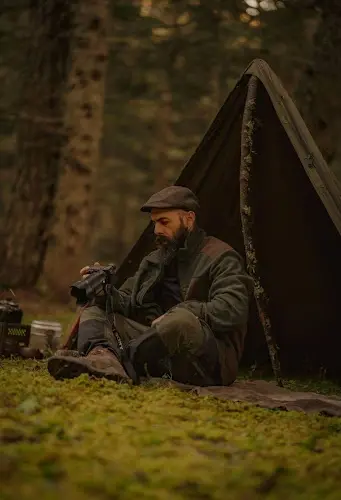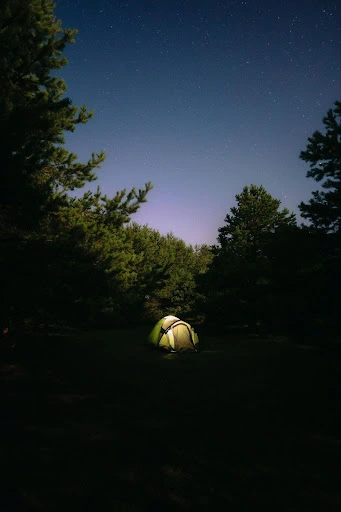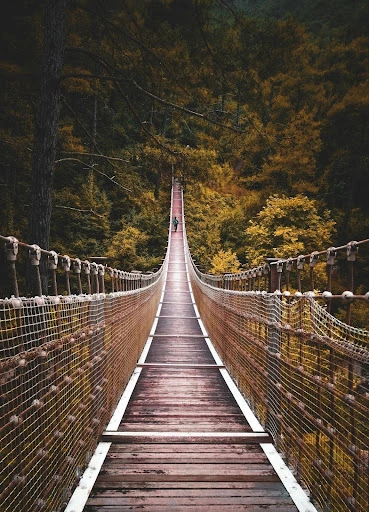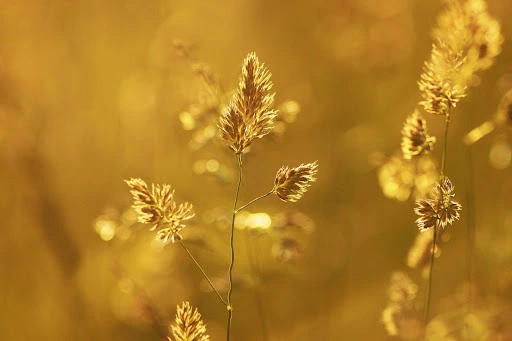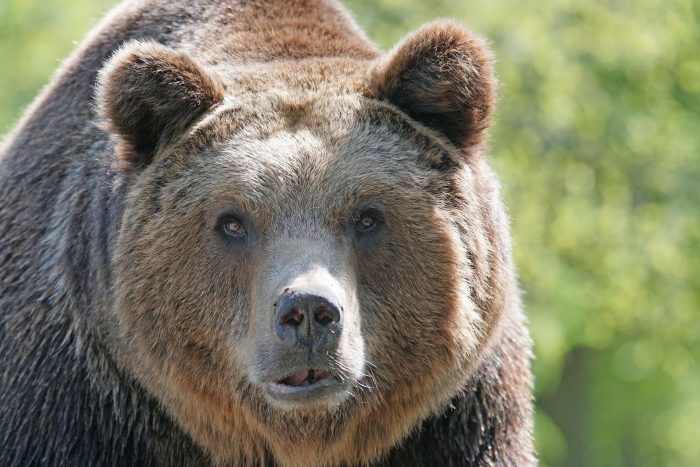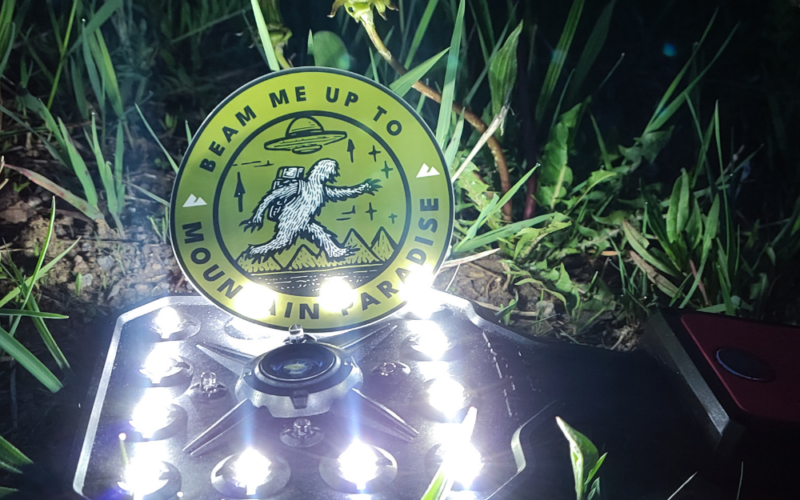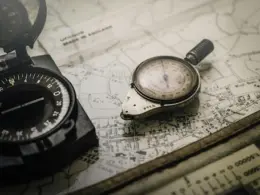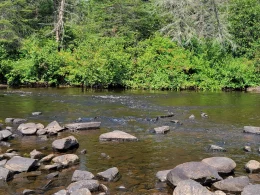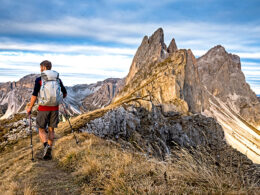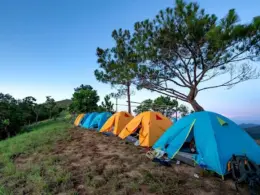For many of us who cherish the moments under the vast open sky, the click of a camera is as thrilling as the crackle of a campfire. It’s not just about snapping pictures; it’s about preserving memories, emotions, and the raw beauty that words can hardly do justice to.
However, some new-age campers could argue that photography distracts from the immersive experience of connecting with nature, asserting that it’s better to absorb the scenery with one’s eyes and soul, undisturbed by technology.
Of course, I’m joking – I have never met anyone who did not like taking pictures of nature, although they may not know how to take their best nature pictures.
This article is crafted for both the shutterbugs and any trace skeptics. We’ll discuss how to harmonize your camping adventures with the art of photography, ensuring you make the most of your natural encounters without having to fiddle with technology too much. If you’re using a fancy camera or just your smartphone, this article can be used with both.
Table of Contents
Gear Essentials for the Camping Photographer
When it comes to capturing the awe-inspiring beauty of nature, the choice between smartphones and cameras boils down to what you value most in your photography. Smartphones, with their compact size and versatility, make for excellent point-and-shoot devices. I often use them to scout new locations before going back with my “good” camera. I love them because they fit in your pocket, require no extra gear, and are always within reach for that unexpected shot.
DSLR and mirrorless cameras, on the other hand, give the “best” quality and control, allowing the photographer to adjust settings for the perfect exposure, focus, and depth of field. While smartphone camera sensors may be powerful, nothing can beat the power of good glass (lenses). You can change the lens based on your situation, for example, you can use a 14mm wide-angle lens to capture the landscape and then switch to a 300mm lens to photograph a bird from far off.
In my experience, it is about more than just the camera, though. A sturdy tripod is essential for stabilizing your shots, especially in low light or for long exposures capturing the night sky. Gimbals offer similar advantages for photos but can be used for video as well.
Investing in a quality camera bag will protect your gear from the elements. I have had many rainy experiences where I am grateful to have had a waterproof bag for my camera.
Composition Techniques for Captivating Nature Shots
While you can just go out and photograph whatever you want, there are some techniques to help you organize and create a story with your shots.
The Rule of Thirds
The Rule of Thirds is a fundamental principle in photography that involves dividing the image into thirds, both horizontally and vertically, creating a grid. Where these lines intersect, we find the ideal spots to place our subjects, making the overall composition more balanced and engaging.
For captivating photographs, position your subject where it naturally leads the viewer’s eyes through the frame, such as pointing or facing toward one of these intersections. This not only draws attention but also adds a sense of direction and movement.
One tip that I use often is to use negative space creatively; it can add a powerful aesthetic to your photo by isolating the subject and minimizing distractions.
Leading Lines
Nature is abundant with natural paths, such as rivers, trails, or branches, that can serve as leading lines in your compositions. These lines guide the viewer’s gaze through the photograph, creating depth and perspective.
To effectively use leading lines, find a perspective where the line starts from the foreground leading towards your main subject or stretching into the distance. Good leading lines are those that are clear, uninterrupted, and direct the viewer’s attention towards the main point of interest in your shot.
One of my favorite ways to use leading lines is to find natural paths through the forest. I also watch out for shorelines on lakes as they draw the eyes of the viewer very well.
Framing Your Subjects
Framing is a technique that involves using elements within the scene to create a ‘frame’ around the subject, thereby focusing the viewer’s attention on the main point of interest. Nature offers an array of options for framing, such as trees, archways, or even windows in ruins.
Using a natural canopy of leaves or the overhang of a rock cliff can add an intriguing layer to your photograph. Think of framing as a way to add context, depth, and interest to your nature shots.
Experimenting with Perspectives
Changing your perspective can dramatically alter the mood and impact of a photograph. Don’t hesitate to experiment by taking shots from high above, down low, or anywhere in between. Unique angles can reveal surprising patterns, textures, and details that might not be visible from a standard eye-level shot. For instance, capturing a landscape from a low angle can make it seem more vast and majestic.
Mastering Natural Light
Natural light in photography can dramatically elevate your images, transforming ordinary scenes into breathtaking landscapes. Which is good since you’re going to be surrounded by it. But no light is created equal and understanding the best and worst kinds can create dramatically different images.
Making the Most of the Golden Hour
The golden hour, the short period after sunrise or before sunset, emits a soft, warm light that can add magic to any scene. During these times, the sun is low in the sky, producing a gentle, diffused light that minimizes harsh shadows and highlights the texture of your landscape.
Photographing during the golden hour not only brings a golden glow to your images but also enhances the atmospheric depth, making it ideal for capturing compelling nature photographs. Most people opt for the sunset session rather than getting up at hours when you should be sleeping. However, you are already out there, so you could just set an alarm and roll out of your tent early.
Dealing with Harsh Midday Light and Overcast Skies
Midday light is often avoided by photographers due to its strong intensity and the harsh shadows it can create. If you’re photographing water or areas with deep shadow then you may want to wait until later in the day. Overcast days offer diffused, but even lighting. This makes it great for most shots but can mute the colors somewhat.
Night Skies and Long Exposures
Photographing the night sky opens up a universe of possibilities. Long-exposure photography allows for the capture of spectacular celestial events like star trails or the Milky Way. This requires a sturdy tripod and some patience as exposure times can extend from seconds to several minutes to gather enough light. Most smartphones have a night mode which helps keep the shutter open for longer to help let in more light.
Conclusion
Photography not only allows for the preservation of memories but also offers a unique avenue to create art that reflects the natural world’s unparalleled beauty. I often find myself looking back at past trips and the magic that I was able to find in all of the areas I was exploring. You should bring your camera out on the next camping trip – you’d be surprised at what comes your way.

